Crystal Vision: How “Superman” Production Designer Beth Mickle Built the Fortress of Solitude
Director James Gunn started small with his 2010 micro-budgeted indie film Super, followed by his acclaimed Guardians of the Galaxy films for Marvel. Now, he’s made a crowd-pleasing new version of Superman that’s raked in more than half a billion in global box office since its release earlier this summer. DC Comics’ original superhero returns in a big way, as Gunn’s universe-corraling reboot pits the title character (David Corenswet), the brilliant and always game Lois Lane (Rachel Brosnahan), and the Justice Gang of metahumans against Lex Luthor (Nicholas Hoult) and his war-mongering schemes, which includes a few super-powered thugs, one of whom, Ultraman, proves especially, brutally efficient at taking on Superman.
The action unfolds against an array of spectacle-scaled backdrops configured by Gunn’s go-to production designer, Beth Mickle. Like Gunn, Mickle segued from indie films into epic-scale movies when her Half Nelson directors, Ryan Fleck and Anna Boden, enlisted her to design Captain Marvel. She then worked with Gunn on Suicide Squad and Guardians of the Galaxy Vol. 3 before taking on his big-budget reboot in the first feature to fly out of DC Studios since Gunn and his co-chief Peter Safran took over the studio.
Speaking from her home in upstate New York, Mickle talked about building superhero environments from fake crystals, turning downtown Cleveland into Metropolis, retrofitting Art Deco train stations, and the dark design behind Lex Luthor’s creeptastic Pocket Universe.
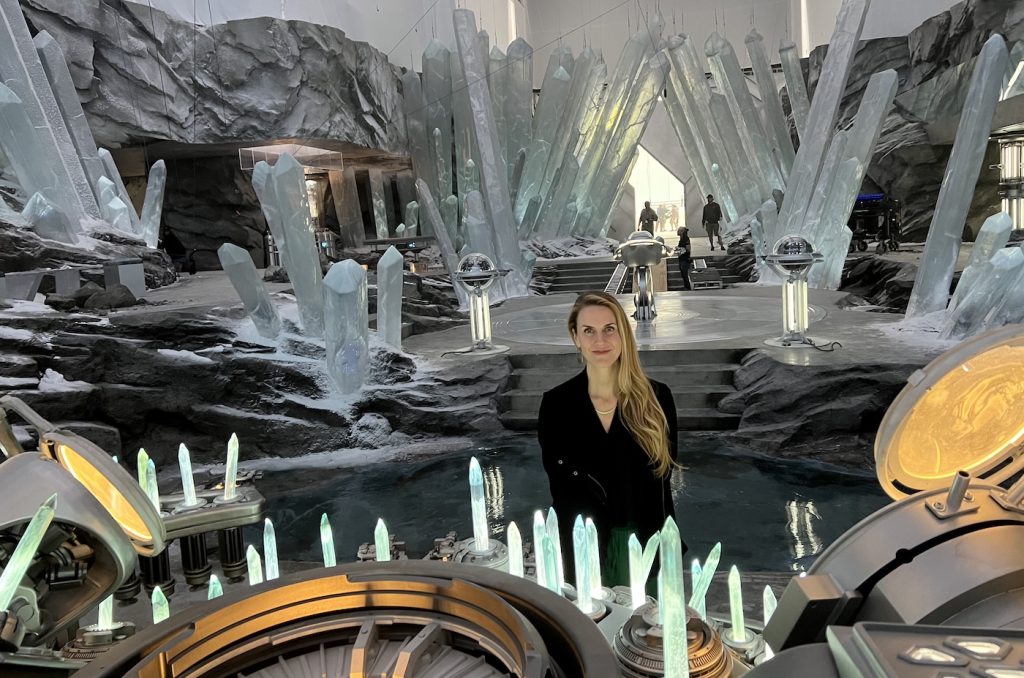
Superman opens on this vast snowscape in the middle of nowhere. It’s very cinematic. How did you find that location?
Initially, we thought Iceland would be a good fit, but when our start dates shifted and the seasons changed, those glaciers wouldn’t have been accessible. Then we did Google Earth scouting and considered British Columbia and New Zealand, but ultimately, Norway came onto our radar as a place that Mission: Impossible had explored. Svalbard is the northernmost point in the world where civilization still exists, because there’s a tiny little mining town there. We did a helicopter scout, and it was just magical, seeing this frozen landscape, no vegetation, the sun setting perpetually. And this big open plain was just a five-minute drive from our hotel. Incredible.
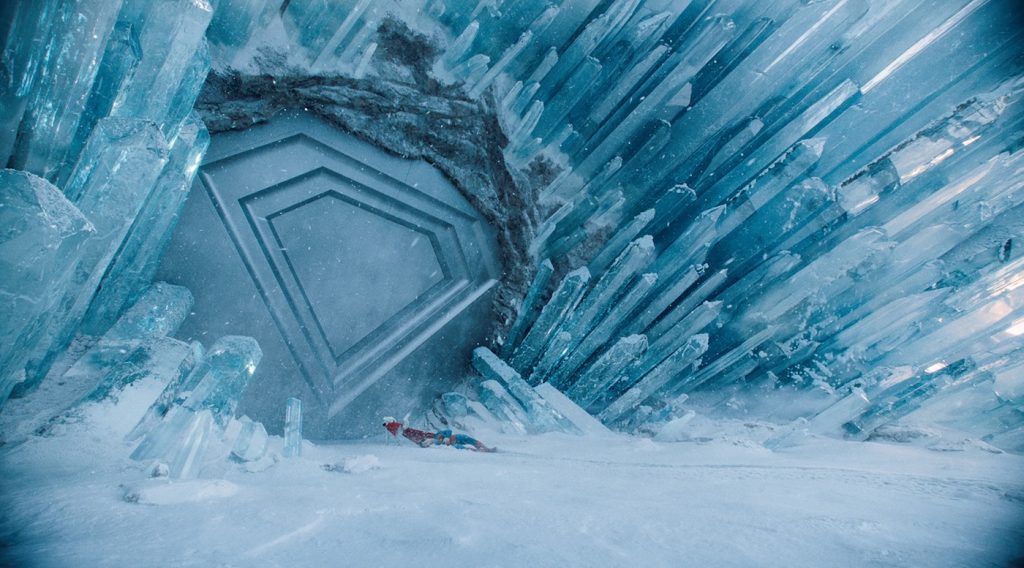
Cut to Krypto the dog dragging Superman across the snow to the secret bunker known by superhero nerds through the ages as the Fortress of Solitude. Where did you build Superman’s hideaway?
We built it at Trilith Studios in Georgia, a half hour south of Atlanta, on a sprawling 40,000 square foot soundstage that we filled wall to wall with every piece of ice and stone we could get in.
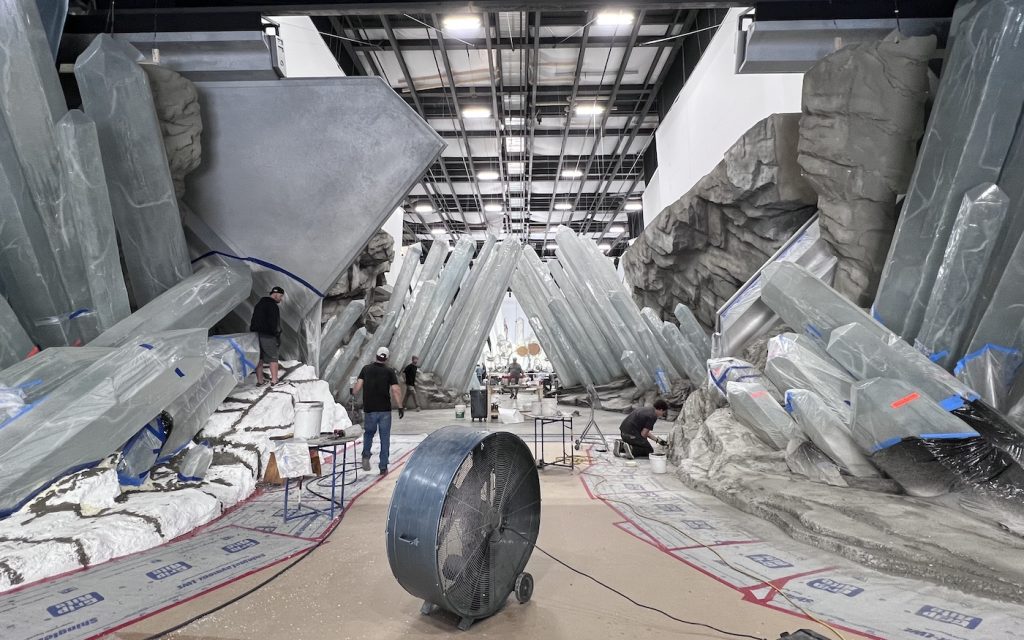
How did you come up with the crystal design?
We loved Richard Donner’s 1978 iteration and the old comics where the fortress was originally inside a mountain, so we did a deep dive into how crystals grow from rocks. Once we found examples of formations that had the right translucency, the right color tint, and the right overall shape, we wanted the crystals to seemingly explode upward from the rocks to give them a propulsive feel. We sculpted them out of resin, made molds from that, and suspended fiberglass strands in the resin to give each one texture and occlusions so they look more natural. After we got that first crystal done, we made 242 more of them.
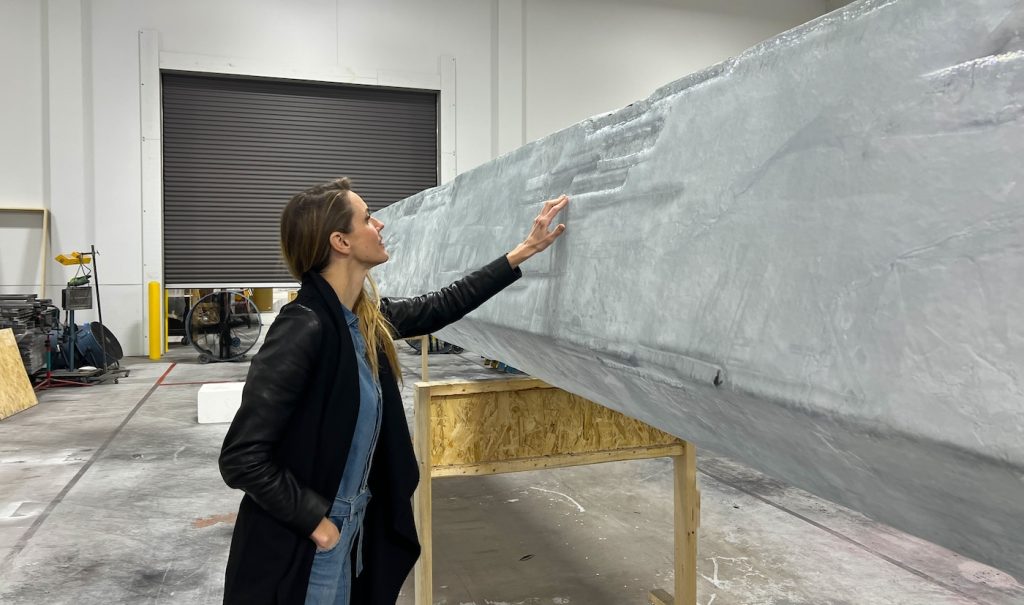
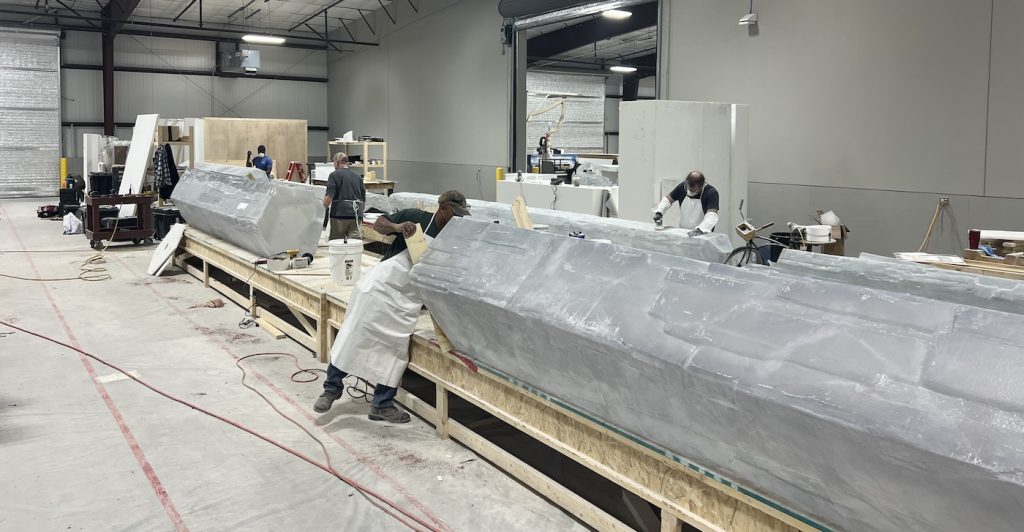
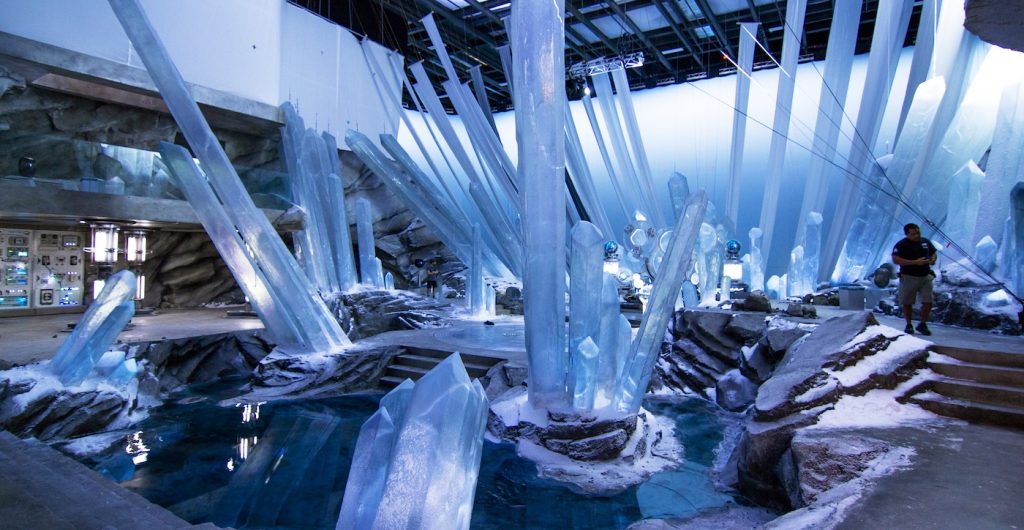
How did you approach designing the world of Superman’s day job as Clark Kent, alongside Lois Lane, at The Daily Planet office?
We wanted The Daily Planet newsroom to feel a bit timeless and not overly modern, which is true for everything you see in Metropolis. We filmed inside this gorgeous train station south of Atlanta. It’s now an event space, so we rented that out, retrofitted everything inside, and dressed the space with stacks of paper, corkboard, landline phones – elements you’d see in fabulous newsrooms from the seventies.
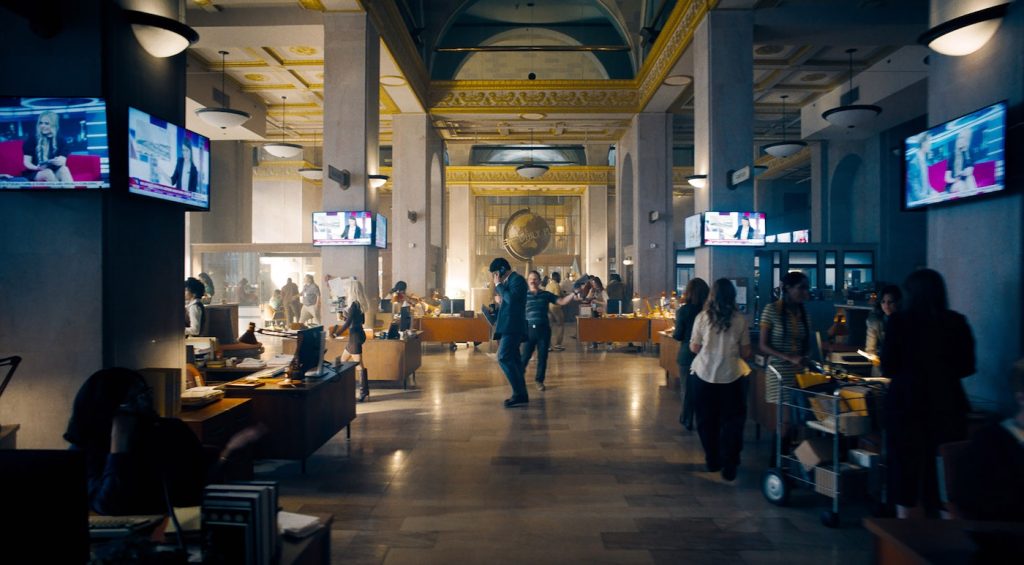
Lex Luthor’s chilling “Pocket Universe” prison fills the screen with stacks of cube-shaped cages. What’s the concept behind this horrendous facility?
This was by far the darkest environment. In the script, James described it as a “world built of arithmetic,” so we asked ourselves, what if cubes compounded and grew onto themselves? Our wonderful art director, Sam Avila, brought in this mineral called Bismuth, which grows at right angles as compound cubes on top of each other. That was a big inspiration point for us.
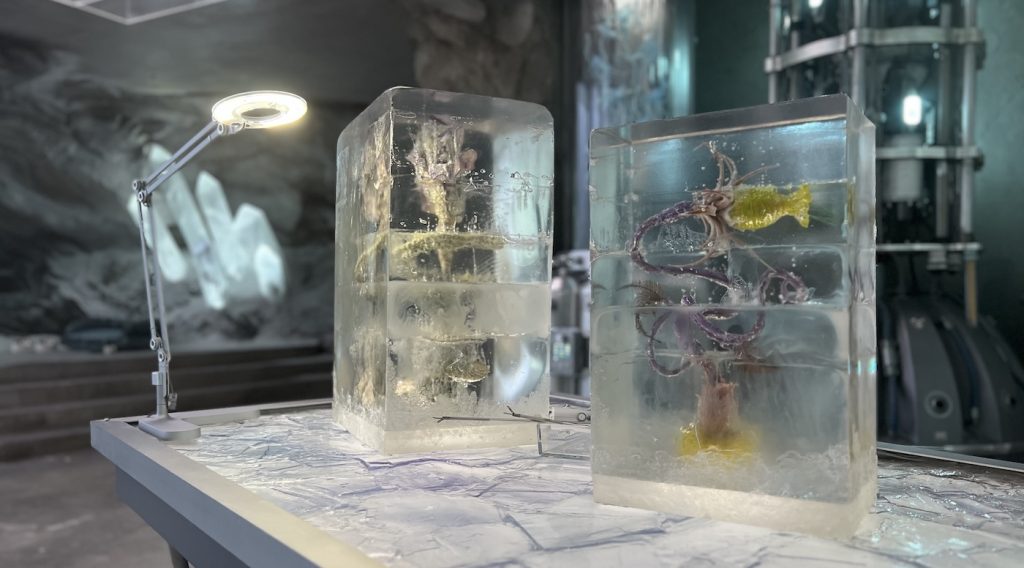
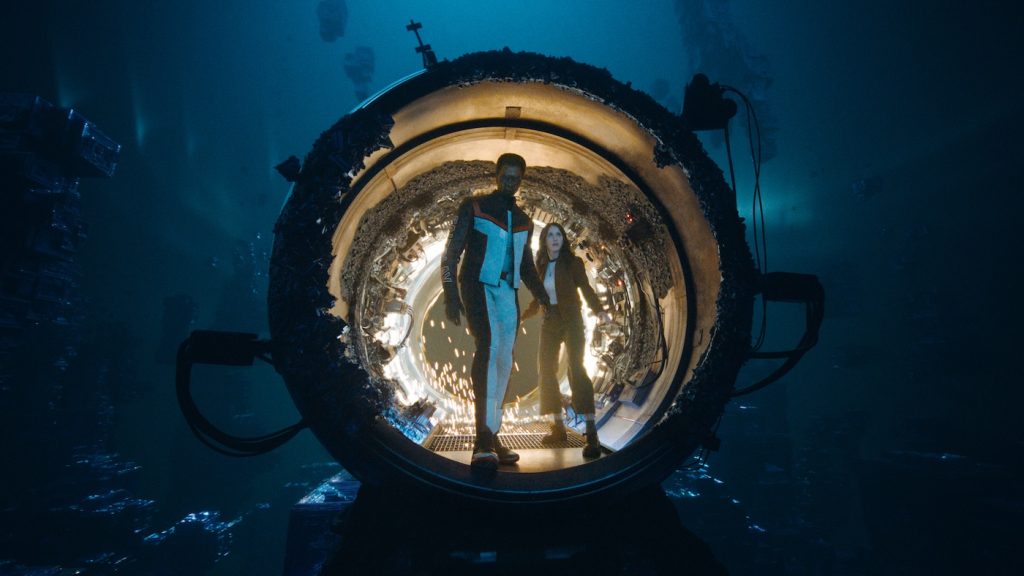
Was the prison also built at Trilith Studios?
Yeah, a couple of stages down from the Fortress of Solitude. We built nine of those cubes, three across and three high. We lovingly refer to it as the Hollywood Squares set.
The Hollywood Squares set in hell.
[Laughing] Yes, Hollywood Squares in Hell.
And then the VFX team digitally extended your physical set?
Exactly. They scanned our cubes and extended [the cages] on both sides and up and down, far as the eye can see, all these people are pacing within their own cubes and bringing that despair into focus. It’s interesting that the prison has come around to being more timely than any of us would have imagined [when we first started working on the movie] back in 2023.
Unlike the deathly Pocket Universe, the Justice Gang headquarters practically screams optimism, with its bright colored interior housed within a beautiful art deco building. How did the Justice Gang environment come together?
Doing research for the overall tone and look of the movie early on, I came across photos of the Cincinnati Union Terminal train station, which had really colorful art deco geometric interiors, so I put that into a look book for us to think about. A couple of weeks later, my art director, Dave Scott, came across an article about the station saying it was the inspiration for the Hall of Justice in the D.C. Comics [cartoon] “Super Friends.” Too good to be true! I called James and Peter [Safran], and we all hopped on a plane to scout this staggering piece of architecture. The colors are the original bright, vivid yellows and oranges, so inside, that’s where we put the Gang’s workstations. Sam found these vintage circular love seats and re-upholstered them in our bright colors with a few new pieces fabricated to look like Milo Baughman, the great mid-century architect and furniture designer. I actually have a couple of his sofas right behind me!
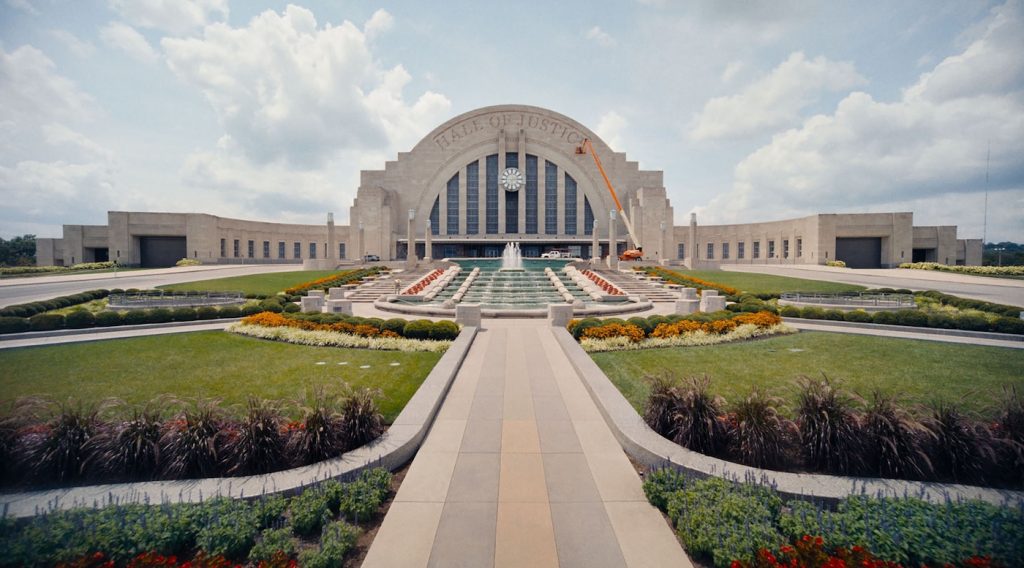
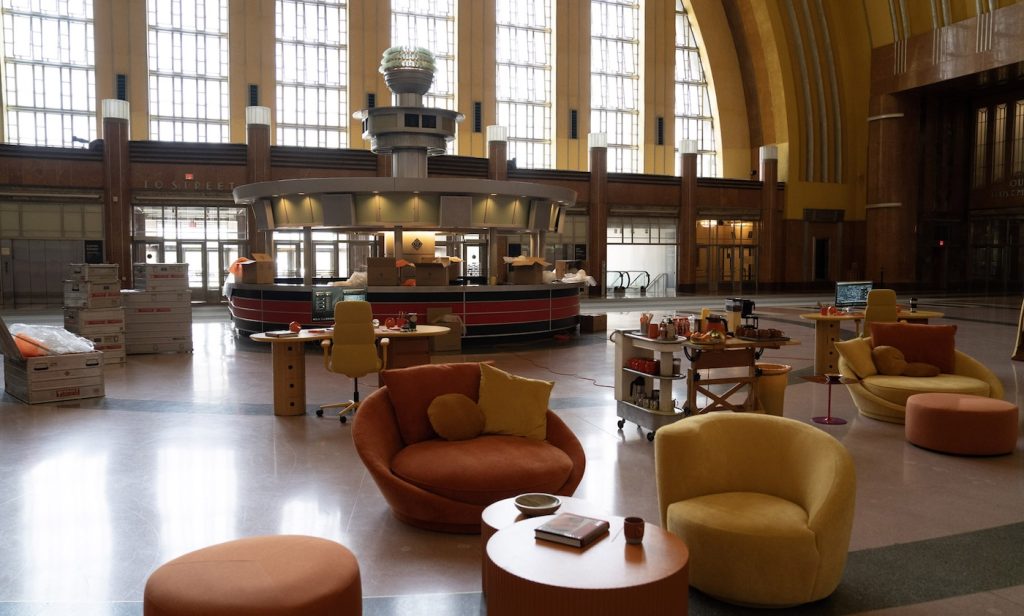
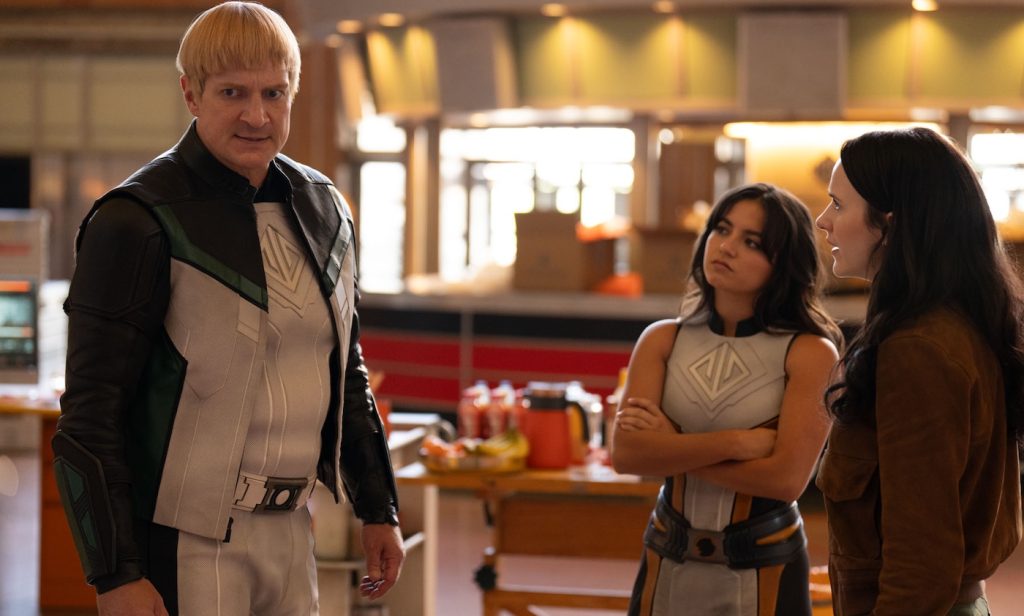
LuthorCorp headquarters looks every bit the villain’s high-rise lair. What were your inspirations for his office?
We looked at 1970s brutalism architecture because it’s severe and dominating, like Lex Luthor’s character. The copper ceiling in his command center is taken right out of this Brutalist theater in Eastern Europe that has concrete finishes and green marble throughout. Once I saw that, I realized it would make a really strong combo, since Lex Luthor’s color in the comic books is green. We built the office fourteen feet up in the air as if it were looking out onto the city. We surrounded the whole thing with a printed backdrop of Metropolis. That’s not CGI background – it’s actually images of real buildings printed onto fabric and wrapped around the set. Some people actually got vertigo because the backdrop really made you feel like you were eighty floors up in the air.
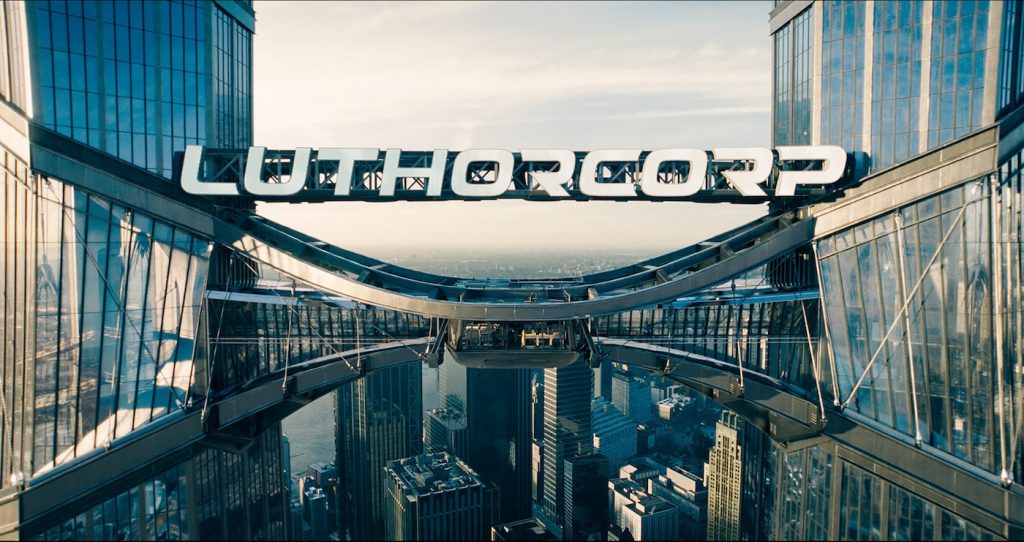
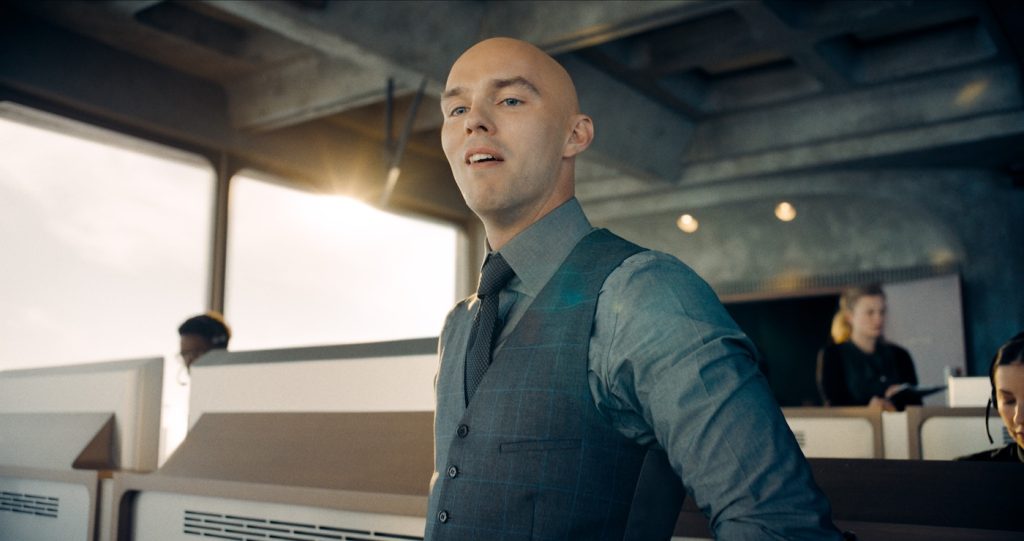
The city of Metropolis itself combines digital imagery with real physical exteriors, right?
We shot exteriors in Cleveland’s public square, where the big monster fight happens. We turned the smoothie shop in the main plaza into a Belly Burger, which is the big burger joint in the D.C. Comics world. For the TV store where the big tank explosion happens, we re-named that Quitely Electronics Shop after comic book artist Frank Quitely, who did the “All-Star Superman” series. We used Cleveland’s beautiful Arcade Building at the end and called it Lacey’s Department Store, another piece of D.C. Lore.
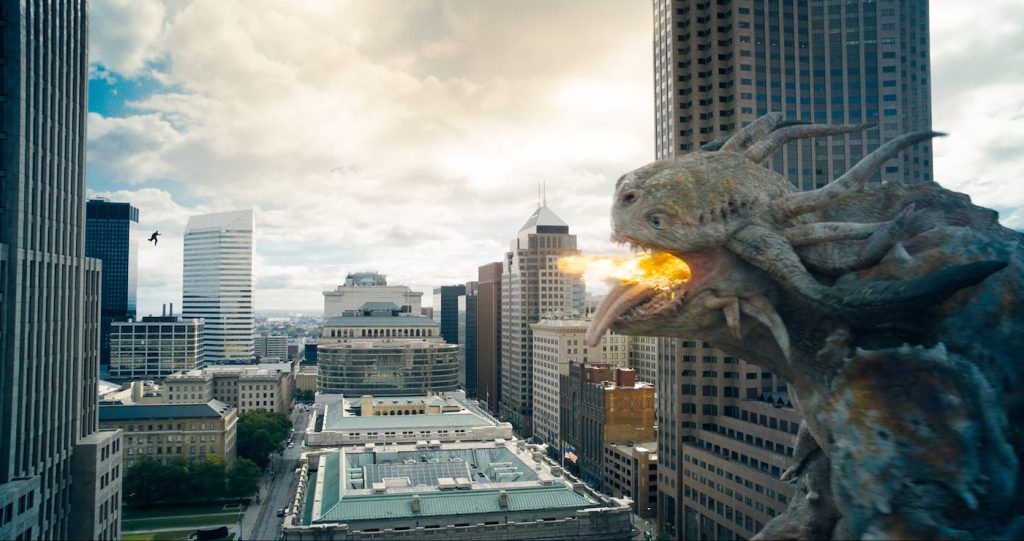
Fan service in action!
There are literally hundreds of Easter eggs for fans, which they can hopefully go through and pinpoint all the things we put in there.
In the course of pulling together all these sets and exterior spaces, how would you describe Superman‘s economic impact on local filmmaking communities?
It’s beautiful to go into a city like Atlanta and have such a nice footprint. A lot of our craftsmen who worked on the Fortress of Solitude set are painters, stone carvers, and carpenters from the area. We go to all the local retailers to rent our furniture, our office supplies, to buy our food, our lunches — all these industries benefit in countless ways from this huge influx of work.
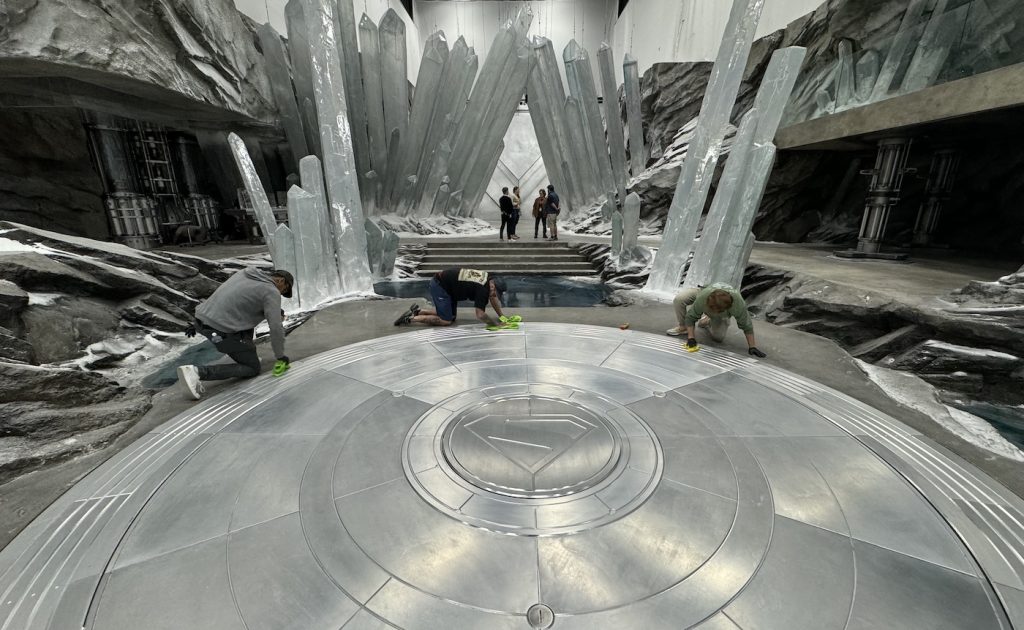
This is your third movie with James Gunn. What’s he like to work with?
James sees the movie in his head when he’s writing, so his direction is crystal clear. And he does these great little doodles. He’s also incredibly loyal to folks who have worked for him over the years. I’ve been with him for eight years, and the team now includes some of my closest friends. We’ve become quite a community.
What about your own department as head of production design?
When I started doing [production design], very few women worked at this level. Once you got in, you were one of maybe thirty women. Now I’m really proud of our department because it’s incredibly diverse. With my art director, Dave Scott, we’ve made it a priority to look out and see this beautiful array of artists that feels like a snapshot of the world population.
Superman is in theaters now.
Featured image: DC Studios’ and Warner Bros. Pictures’ “SUPERMAN,” a Warner Bros. Pictures release. © 2025 Warner Bros. Ent. All Rights Reserved. TM & © DC

